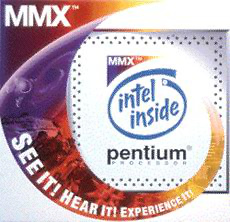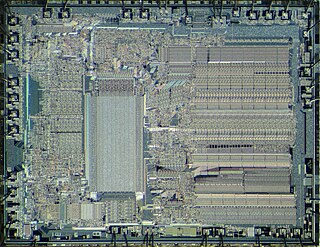Potential exceptions
This section is empty.You can help by adding to it.(July 2010) |
In the x86 assembly programming language, MOVDDUP is the name for a specific action performable by modern x86 processors with 3rd-generation Streaming SIMD Extensions (SSE3). This action involves copying a number to temporary space in the processor for use in other computations.
Specifically, MOVDDUP causes one, double-precision, floating-point source to be copied to both the lower half and upper half of an XMM register.
| Opcode | F2 0F 12 /r |
|---|---|
| Assembly (Intel syntax) | MOVDDUP xmm1, xmm2/m64 |
| Assembly (AT&T syntax) | MOVDDUP xmm2/m64, xmm1 |
| icc intrinsic equivalent(s) | __m128d _mm_movedup_pd(__m128d a)__m128d _mm_load_pd1(const double * mem_addr) |
| gcc built-in(s) | v2df __builtin_ia32_movddup(v2df) |
The source operand can be either an XMM register (xmm2) or a memory address (m64). When the source operand is an XMM register, the lower half of the register is used in the operation. When the source operand is a memory address, it is assumed to be the address of an 8-byte region, the value at which is used in the operation.
The destination operand must be an XMM register (xmm1).
This section is empty.You can help by adding to it.(July 2010) |

The Intel 8080 ("eighty-eighty") is the second 8-bit microprocessor designed and manufactured by Intel. It first appeared in April 1974 and is an extended and enhanced variant of the earlier 8008 design, although without binary compatibility. The initial specified clock rate or frequency limit was 2 MHz, and with common instructions using 4, 5, 7, 10, or 11 cycles this meant that it operated at a typical speed of a few hundred thousand instructions per second. A faster variant 8080A-1 became available later with clock frequency limit up to 3.125 MHz.

The 8086 is a 16-bit microprocessor chip designed by Intel between early 1976 and June 8, 1978, when it was released. The Intel 8088, released July 1, 1979, is a slightly modified chip with an external 8-bit data bus, and is notable as the processor used in the original IBM PC design.

x86 is a family of instruction set architectures initially developed by Intel based on the Intel 8086 microprocessor and its 8088 variant. The 8086 was introduced in 1978 as a fully 16-bit extension of Intel's 8-bit 8080 microprocessor, with memory segmentation as a solution for addressing more memory than can be covered by a plain 16-bit address. The term "x86" came into being because the names of several successors to Intel's 8086 processor end in "86", including the 80186, 80286, 80386 and 80486 processors.
In computer science, an instruction set architecture (ISA) is an abstract model of a computer. It is also referred to as architecture or computer architecture. A realization of an ISA, such as a central processing unit (CPU), is called an implementation.

MMX is a single instruction, multiple data (SIMD) instruction set designed by Intel, introduced in January 1997 with its P5-based Pentium line of microprocessors, designated as "Pentium with MMX Technology". It developed out of a similar unit introduced on the Intel i860, and earlier the Intel i750 video pixel processor. MMX is a processor supplementary capability that is supported on recent IA-32 processors by Intel and other vendors.
In computing, Streaming SIMD Extensions (SSE) is a single instruction, multiple data (SIMD) instruction set extension to the x86 architecture, designed by Intel and introduced in 1999 in their Pentium III series of Central processing units (CPUs) shortly after the appearance of Advanced Micro Devices (AMD's) 3DNow!. SSE contains 70 new instructions, most of which work on single precision floating point data. SIMD instructions can greatly increase performance when exactly the same operations are to be performed on multiple data objects. Typical applications are digital signal processing and graphics processing.

The Intel MCS-51 is a single chip microcontroller (MCU) series developed by Intel in 1980 for use in embedded systems. The architect of the Intel MCS-51 instruction set was John H. Wharton. Intel's original versions were popular in the 1980s and early 1990s and enhanced binary compatible derivatives remain popular today. It is an example of a complex instruction set computer, and has separate memory spaces for program instructions and data.
x86 Assembly Language is a family of backward-compatible assembly languages, which provide some level of compatibility all the way back to the Intel 8008 introduced in April 1972. x86 assembly languages are used to produce object code for the x86 class of processors. Like all assembly languages, it uses short mnemonics to represent the fundamental instructions that the CPU in a computer can understand and follow. Compilers sometimes produce assembly code as an intermediate step when translating a high level program into machine code. Regarded as a programming language, assembly coding is machine-specific and low level. Assembly languages are more typically used for detailed and time critical applications such as small real-time embedded systems or operating system kernels and device drivers.

x86-64 is the 64-bit version of the x86 instruction set. It introduces two new modes of operation, 64-bit mode and compatibility mode, along with a new 4-level paging mode. With 64-bit mode and the new paging mode, it supports vastly larger amounts of virtual memory and physical memory than is possible on its 32-bit predecessors, allowing programs to store larger amounts of data in memory. x86-64 also expands general-purpose registers to 64-bit, as well extends the number of them from 8 to 16, and provides numerous other enhancements. Floating point operations are supported via mandatory SSE2-like instructions, and x87/MMX style registers are generally not used ; instead, a set of 32 vector registers, 128 bits each, is used. In 64-bit mode, instructions are modified to support 64-bit operands and 64-bit addressing mode. The compatibility mode allows 16- and 32-bit user applications to run unmodified coexisting with 64-bit applications if the 64-bit operating system supports them. As the full x86 16-bit and 32-bit instruction sets remain implemented in hardware without any intervening emulation, these older executables can run with little or no performance penalty, while newer or modified applications can take advantage of new features of the processor design to achieve performance improvements. Also, a processor supporting x86-64 still powers on in real mode for full backward compatibility with the 8086, as x86 processors supporting protected mode have done since the 80286.
SSE2 is one of the Intel SIMD processor supplementary instruction sets first introduced by Intel with the initial version of the Pentium 4 in 2000. It extends the earlier SSE instruction set, and is intended to fully replace MMX. Intel extended SSE2 to create SSE3 in 2004. SSE2 added 144 new instructions to SSE, which has 70 instructions. Competing chip-maker AMD added support for SSE2 with the introduction of their Opteron and Athlon 64 ranges of AMD64 64-bit CPUs in 2003.
Memory-mapped I/O (MMIO) and port-mapped I/O (PMIO) are two complementary methods of performing input/output (I/O) between the central processing unit (CPU) and peripheral devices in a computer. An alternative approach is using dedicated I/O processors, commonly known as channels on mainframe computers, which execute their own instructions.

The Intel 8087, announced in 1980, was the first x87 floating-point coprocessor for the 8086 line of microprocessors.
Supplemental Streaming SIMD Extensions 3 is a SIMD instruction set created by Intel and is the fourth iteration of the SSE technology.
In the x86 assembly programming language, MOVAPD is the name for a specific action performable by modern x86 processors with 2nd-generation Streaming SIMD Extensions (SSE2). This action involves copying a pair of numbers to temporary space in the processor for use in other computations. MOVAPD is one of the fastest ways to accomplish this effect.
In the x86 assembly programming language, MOVHPD is the name for a specific action performable by modern x86 processors with 2nd-generation Streaming SIMD Extensions (SSE2). This action involves either copying a number from memory to temporary space or copying a number from temporary space to memory.
Advanced Vector Extensions are extensions to the x86 instruction set architecture for microprocessors from Intel and AMD proposed by Intel in March 2008 and first supported by Intel with the Sandy Bridge processor shipping in Q1 2011 and later on by AMD with the Bulldozer processor shipping in Q3 2011. AVX provides new features, new instructions and a new coding scheme.
The VEX prefix and VEX coding scheme are comprising an extension to the x86 and x86-64 instruction set architecture for microprocessors from Intel, AMD and others.
Carry-less Multiplication (CLMUL) is an extension to the x86 instruction set used by microprocessors from Intel and AMD which was proposed by Intel in March 2008 and made available in the Intel Westmere processors announced in early 2010. Mathematically, the instruction implements multiplication of polynomials over the finite field GF(2) where the bitstring represents the polynomial . The CLMUL instruction also allows a more efficient implementation of the closely related multiplication of larger finite fields GF(2k) than the traditional instruction set.
The F16C instruction set is an x86 instruction set architecture extension which provides support for converting between half-precision and standard IEEE single-precision floating-point formats.
The EVEX prefix and corresponding coding scheme is an extension to the 32-bit x86 (IA-32) and 64-bit x86-64 (AMD64) instruction set architecture. EVEX is based on, but should not be confused with the MVEX prefix used by the Knights Corner processor.